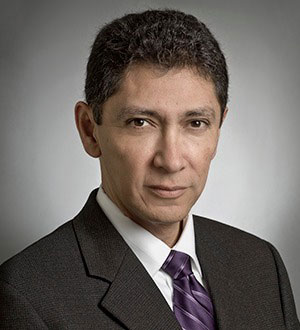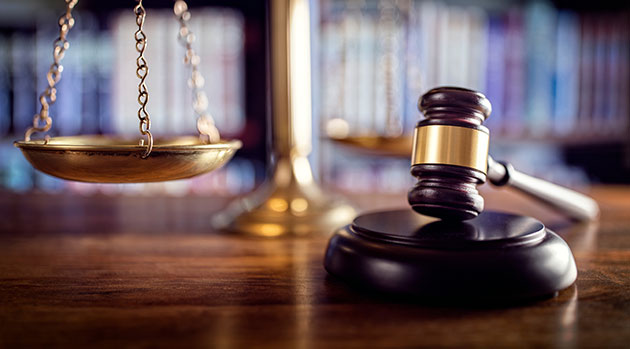The tremendous trial pitting two titans of Silicon Valley against one another may have suffered another delay last week, but that doesn’t mean either side is taking a break.
On the contrary, Uber and Waymo—Google’s self-driving division—may have more to discuss than ever in the wake of the litigation’s postponement.
Both sides now must present their best case on whether an explosive new piece of evidence—the resignation letter of a former Uber employee alleging the company specifically trains its workers to steal trade secrets from competitors—was kept away from the court accidentally, or whether Uber intentionally tried to hide the document.
At stake is what—and how much—a jury could be told about Uber’s apparent attempt to conceal the letter from Waymo. This development could prove exceptionally costly in the $2.6 billion suit, which is being presided over by Judge William Alsup in the U.S. District Court for the Northern District of California.
The stable of lawyers secured by each side were tasked with ironing out the new wrinkle in the lawsuit during an evidentiary hearing in San Francisco on Monday.
The meeting—a continuation of a hearing last week where the letter in question was first presented—was likely the last of the year on the matter, with Alsup instructing the attorneys to plead their cases to a court-appointed specialist before he makes a determination on how to proceed at a final pretrial conference in January. The case’s new start date has been set for February 5.
Any decision Alsup comes to will factor heavily into the ultimate outcome of the suit—which, in turn, will likely have a deep impact on the development of autonomous vehicles—and the lawyers involved were left with a lot to consider.
What’s in a Word?
For Uber, the best way to soften the blow of a jury hearing the letter’s contents may be to argue that the 37-page document simply slipped under the radar.
Indeed, Uber attorney Arturo Gonzalez seemed to lay down the beginnings of that scenario at the hearing, coming time and again to the idea of search terms.

At the start of the discovery process, attorneys for the two companies agreed to certain words and phrases that would be specifically sought after in their corporate files to help narrow down the massive trove of emails and documents requested by each side, he explained. Nothing found in the letter would have come up under the agreed-upon search terms, Gonzalez said.
Uber had also been inundated with information requests by Waymo, and given a short period of time to respond—a scenario in which “mistakes will happen,” he added.
Waymo attorney Charles Verhoeven shot back that the letter “accuses Uber of misappropriating Waymo’s trade secrets,” which is the true issue at the core of the case, he said, adding that “the notion that somebody couldn’t figure out that this was relevant is ludicrous.”
Still, the document’s relevancy to the case is a separate issue from whether it was requested or not, Alsup noted, opening up fresh rounds of arguments from lawyers on both sides about timelines and the type of information being sought.
Ultimately, those arguments will have to be made to special master John Cooper, an outside party in the case who will weigh both sides and report directly back to Alsup.
His decision will determine what a jury officially hears about the fiasco—but Alsup made no secret of his own thoughts on the matter.
What’s It All Worth?
In a highly unusual move, the letter in question—written by an attorney representing former Uber employee Richard Jacobs—was sent to Alsup last week by federal prosecutors, who are pursuing a separate investigation of the matter.
That the document didn’t come directly from Uber, however, didn’t seem to surprise the judge.
“If both sides play fair and square, you get to decide the case strictly on merits, but this is not the usual case,” he said. “There’s been a lot of destruction of evidence.”
Rattling off an expansive—yet admittedly partial—list of previous offenses (“It’s a long list I can’t remember off the top of my head,” Alsup said), he mentioned that the inclusion of the letter in the catalogue of side-stepped evidence would impact not just the greater story of the case, but which roles Uber and Waymo are perceived of playing in it.
Still, he seemed to offer at least one potential narrative to Uber, saying the rideshare giant could have come across several Waymo trade secrets by more innocent means, including former Waymo employees utilizing information they simply remembered from their time at the Google affiliate.
“I am going to consider those all together because it’s part of the common story, and the question that I’m trying to figure out is, how much of that story should be told to the jury?” Alsup said.
But the jury will have to assess much more than the cost of such behavior on Uber’s reputation—they’ll have to come up with how much, if anything, the app company will have to pay Waymo in damages.
And how to determine that figure is yet another task Alsup set the attorneys to hammer out.
What’s Left to Prove?
In the hearing’s closing minutes, Alsup mused on not just what a jury would hear from him but on exactly what they would be tasked with determining.
He wondered aloud whether Waymo would need to prove Uber profited off of any information they may have stolen from their corporate competitor—called “unjust enrichment”—or whether it was enough for Waymo to simply prove Uber had acquired the information at all.
While proof of trade secret theft could be enough for an injunction, it may not necessitate the payment of damages, Alsup said. (If the jury should find, however, that there was some unjust enrichment, but not be able to affix a numeric value to it, the case could call for “reasonable royalties” to be rewarded to Waymo, he said.)
Lawyers on either side of the case seemed as unsure as Alsup on how the question should be answered—but both camps have until the new year to search previous case law in pursuit of an answer.
Still, with Uber heavily invested in the self-driving market, even an injunction could throw the struggling company into further turmoil.
Regardless, the ground rules for the case are now being crafted—and its true cost on the development of self-driving technology will soon be seen.
